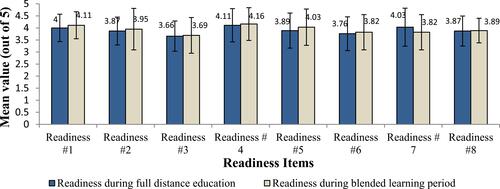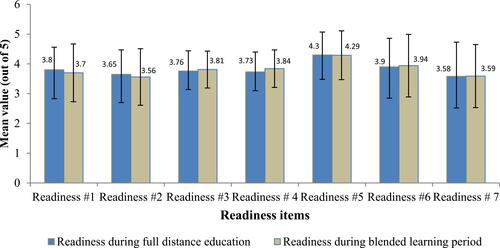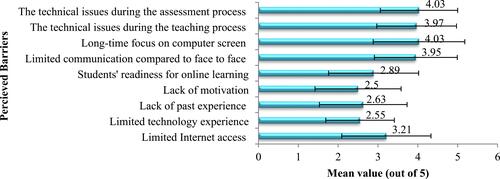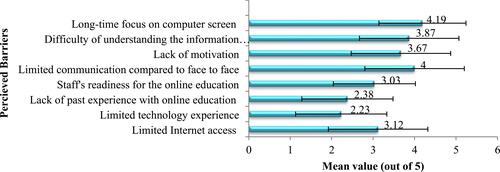Figures & data
Table 1 Academic Staff’s and Students’ Perception Towards Distance Education
Figure 1 Academic staff’s views (mean ± SD) on the readiness for the shift to distance education during the full distance education and blended learning (n = 38).

Figure 2 Students’ views (mean ± SD) on the readiness for the shift to distance education during the full distance learning and blended learning (n = 223); n= 223 for responses during full distance learning, and n =172 for responses during blended learning as students on semester 11 were removed from the analysis since they were in the internship year during the first term of the academic year 2020–2021.

Figure 3 Academic staff’s views on the perceived barriers against the distance education process (n = 38).

Figure 4 Students’ views (mean ± SD) on the perceived barriers against the distance education process (n = 223).

Table 2 Academic Staff’s and Students’ Perceived Acquisitions Due to the Distance Education
Table 3 Main Themes and Supporting Quotes from Focus Group Discussion with Academic Staff (n = 8) and Students (n = 9)
